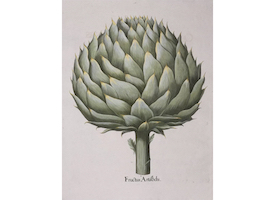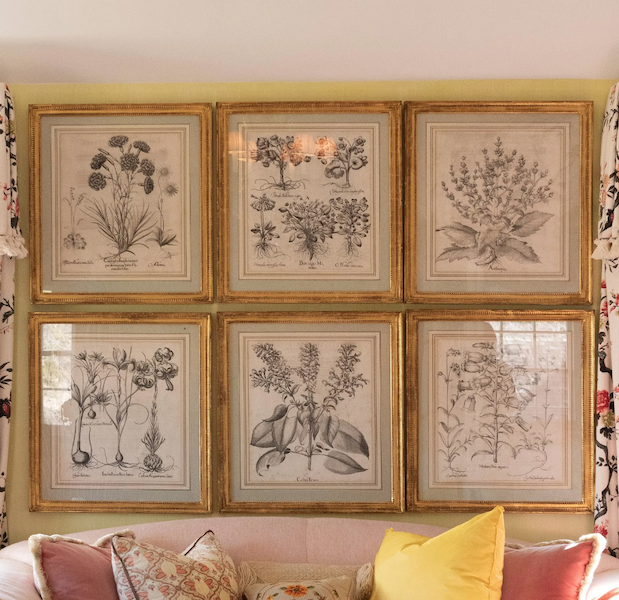
NEW YORK — People have long brought the natural world into their homes in the form of plants that thrive indoors as well as cut flowers that might only last a week but are majestic when in bloom. One of the best and least labor-intensive ways to appreciate the beauty of flowers and plants year-round is by displaying framed botanical illustrations and engravings. Basilius Besler (1561–1629) was among the most renowned masters of this genre, which requires strong command of the nuances of both art and science.
The history of botanical images goes back to ancient Greece. The first known illustrated book of such images was made circa 50 A.D. by a Greek botanist, Pedanius Dioscorides, and titled De Materia Medica, to help identify plant species for medicinal purposes, said Lisa Thomas, who is director of the Fine Arts Department at Stair in Hudson, N.Y. By the 17th century, advances in printing made it easier for botanical illustrators to reproduce images on a larger scale.
Basilius Besler was an apothecary and botanist in Nuremberg, Germany before being commissioned by the Prince Bishop of Eichstatt, Johann Conrad von Gemmingen, to advise him on depicting the holdings of what soon became one of Germany’s most famous gardens. Started in 1596 from designs by botanist-physician Joachim Camerarius, the garden project went to Besler after Camerarius’s death in 1598. Besler not only suggested to the prince what specimens to buy but undertook sketching the many species of plants it contained. In his magnum opus, Hortus Eystettensis (which translates to Garden at Eichstatt), Besler details more than 1,000 plant species. The book was first published in 1613 and featured lifelike images that married science and natural history with the skilled hand of a draftsman who elevated them to fine art.
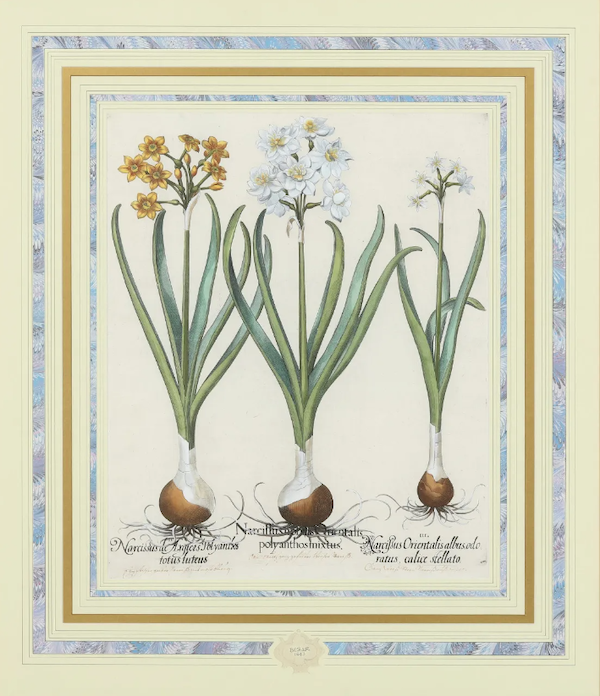
Sometimes referred to as a paper museum, Besler’s book documented the nearly infinite colors and species of plant life in the prince’s eight separate gardens. While the books are collectible in their own right, individual plates and engravings from his books make wonderful stand-alone artworks that appeal to many collectors.
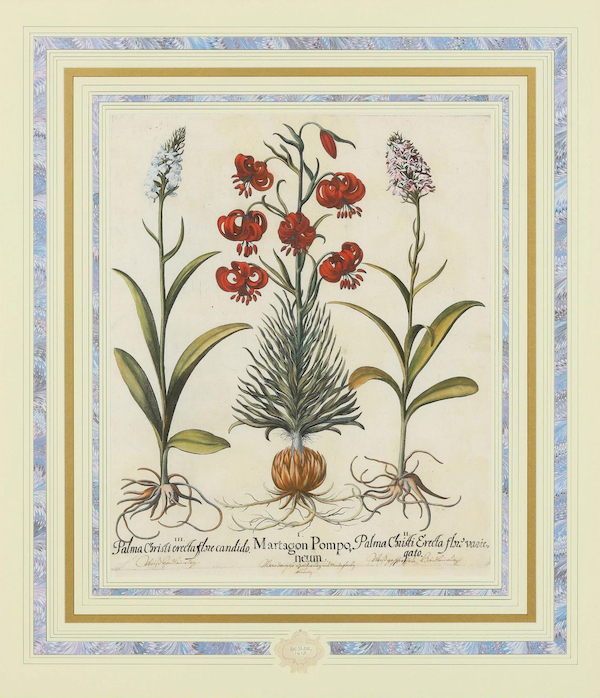
“Besler approached his work from the scientific impulse to document and describe the huge variety of plants that grew where he worked as an apothecary and botanist at the gardens of the Prince Bishop Johann Conrad in Eichstatt, Germany,” Thomas said. “Besler worked as both artist and publisher of his illustrated books. For his famous Hortus Eystettensis, he oversaw a team of at least 10 artists with whom he worked to create 374 plates over the course of 16 years.”
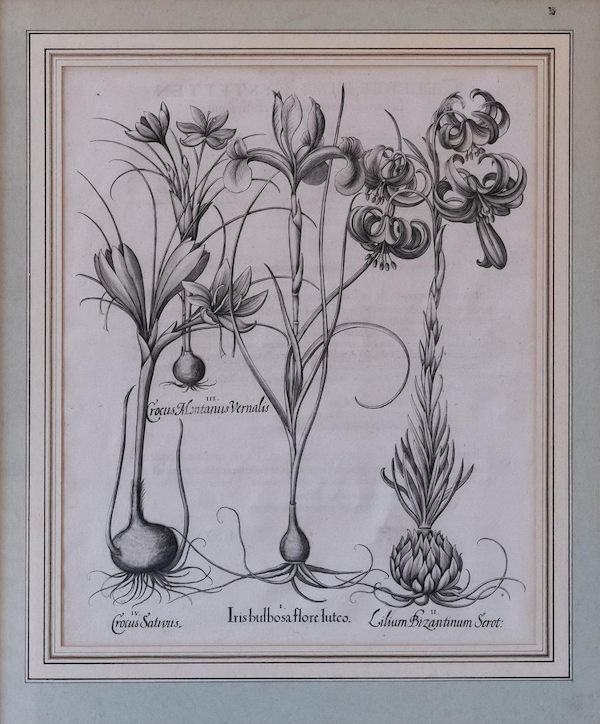
Besler’s legacy lies in his comprehensive and exacting documentation of the plants in Hortus Eystettensis. “His botanicals are represented in a stylized fashion that convey the beauty of each species and the grandeur of the Bishop’s garden as a whole,” Thomas said. “While trained as a scientist, Besler was able to depict each specimen with an artist’s understanding of formal visual tenets, the use of space on the page, and the depiction of foliage and roots that goes beyond their linear depiction to become works of art rather than simple representations.”
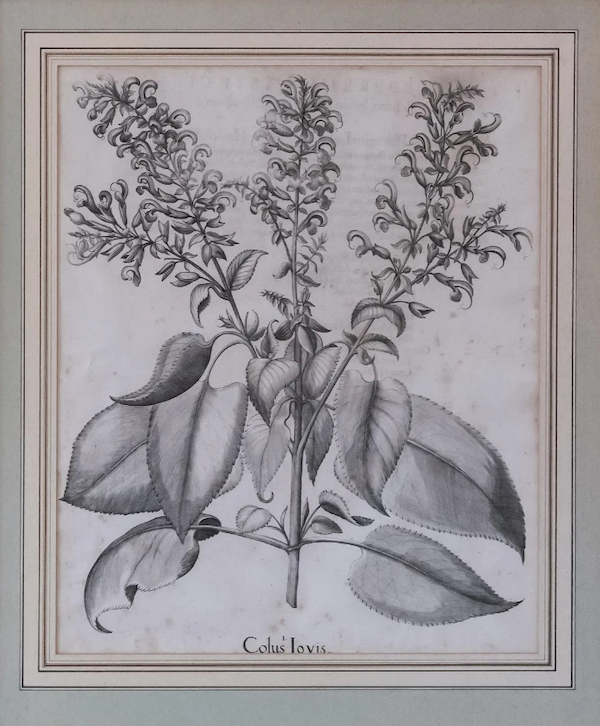
Perhaps counterintuitively, his most colorful engravings do not always bring the highest auction prices. A grouping of eight Besler plates in black, minus the hand-coloring seen on later copies, attained $20,000 plus the buyer’s premium in April 2023 at Stair. These came from the collection of Susie Hilfiger and were from the book’s early first edition, Thomas explained. “The first edition of Hortus was published in two issues, one with descriptive text on the verso and the other without,” she said. “The latter is considered the deluxe version and was meant to be colored, but only a handful were colored at the time of publication and are extremely rare.”
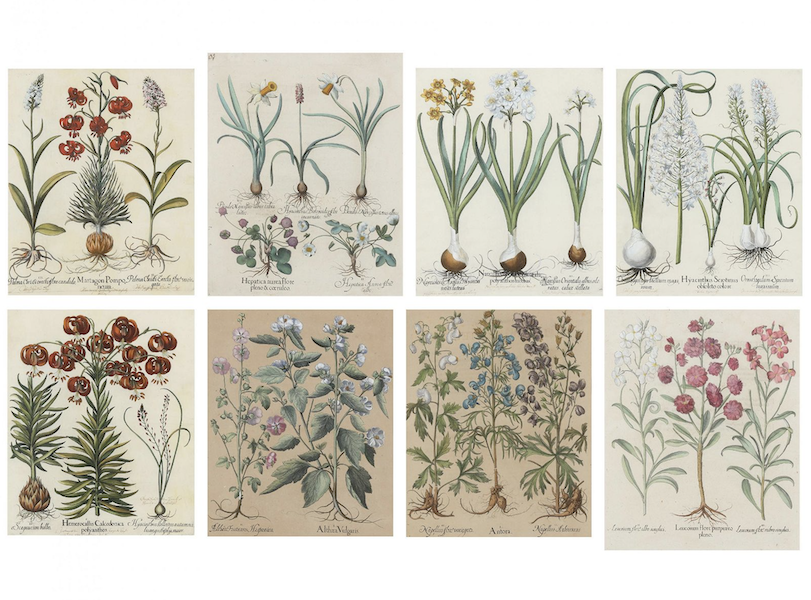
There are many ways to build a collection of botanical artwork but one of the easiest is to collect illustrations of a particular species, which can be framed individually and hung together on a wall. A fine set of six of Besler’s hand-colored engravings of different tulips sold for £7,000 (about $8,675) plus the buyer’s premium at Dreweatts Donnington Priory in May 2017.
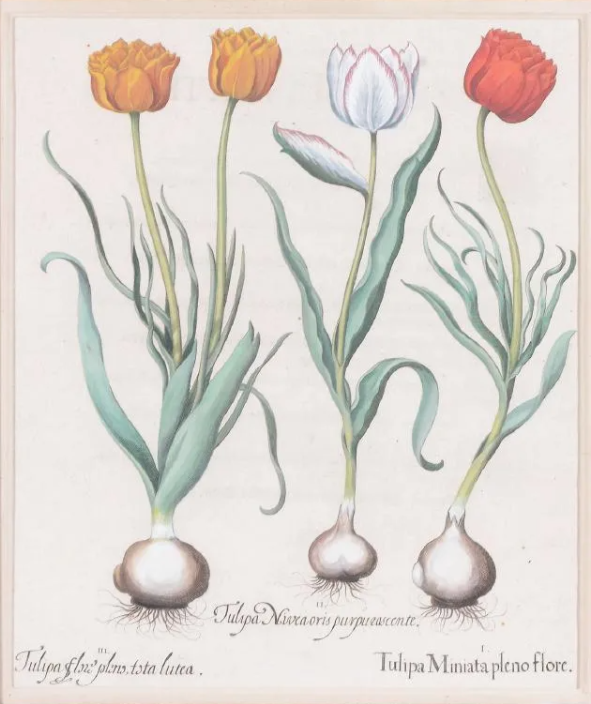
The audience who collects Besler’s botanicals is as diverse as the species pictured. Some might be drawn to engravings of a certain flower, which they might have featured in their wedding, or appeared in their family’s garden, or is simply a personal favorite for whatever reason. A quartet of hand-colored engravings, mostly depicting Caryophyllus varieties that are part of the carnation family, realized $5,500 plus the buyer’s premium in October 2022 at Stair.
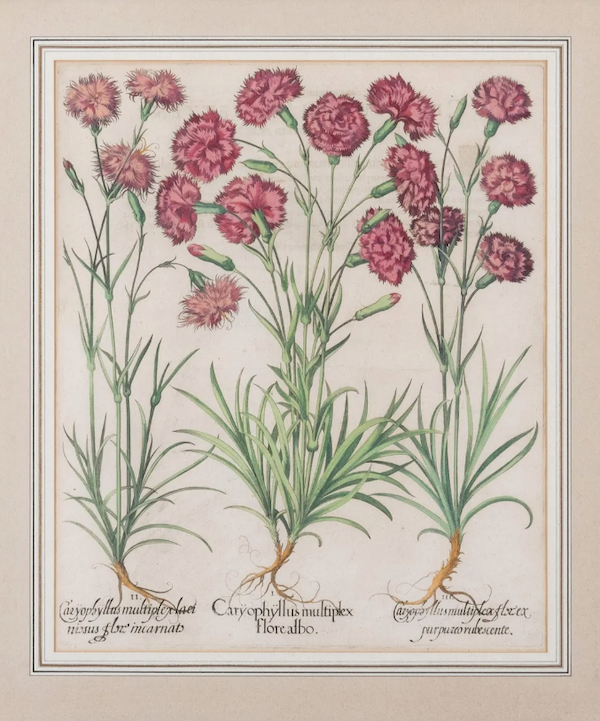
Besler’s work is notable not just for the attention he paid to the flower blossoms, petals and leaves but the entire structure of the plant, including the roots. A fine example of this is a collection of eight various botanical hand-colored engravings, ranging from yellow and white narcissus (daffodils) to hepatica and hyacinth, which brought $6,000 plus the buyer’s premium in June 2022 at Leland Little.
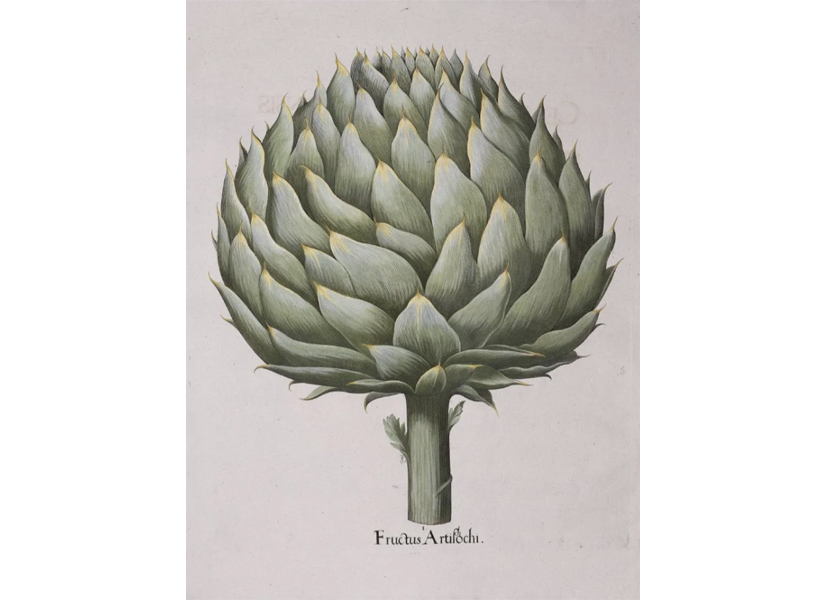
While flowers are typically the most sought-after category of botanical illustrations, vegetables and other plant species have also secured a fan base. In Besler’s hand, these illustrations make strong visual statements that draw attention wherever they are shown. A folio botanical engraving of an artichoke by him made $3,150 plus the buyer’s premium in March 2019 at Trillium Antique Prints & Rare Books.
“The market for illustrated botanical books is two-fold. There are collectors who buy rare and unusual botanical engravings who come to their collecting from an academic viewpoint. Then there are collectors who love plants and flowers and collect in a more ‘decorative’ way, buying flowers they like in pleasing colors,” Thomas said. “Both categories of collectors like Besler prints, so the market has remained strong where other botanical artists have seen a softening of the market.”


